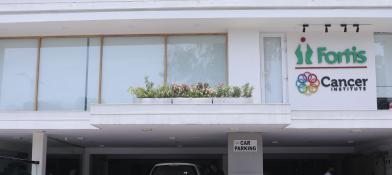Lung cancer screening
Overview:
Lung cancer screening (LCS) is a procedure for detecting the presence of lung cancer in individuals who have higher chances of developing cancer. This is done in individuals who have been chronic smokers in the past or are smoking. They detect the abnormal areas in the chest that have developed cancer. Early detection and treatment of cancer can prolong an individual's lifespan. This procedure uses low dose computed tomography (LDCT) to screen people at high risk of developing cancers.
Lung cancer is the most common cancer and is one of the leading causes of death. Earl screening helps to detect cancers that are in the early stages. Small lung lesions that have not spread to other organs are easy to treat and have successful outcomes. Regular lung cancer screening in smokers helps in the early detection and better prognosis even before the development of symptoms.
Indications:
Lung cancer screening is indicated in individuals who have a habit of smoking for 20-pack years or longer. A pack year is the number of cigarettes multiplied by the number of years. This can be smoking one pack for two years or two packs for ten years. Individuals over 50 years old can get an annual lung cancer screening done. Individuals who were heavy smokers in the past and quit smoking can also consider lung cancer screening. Those who have a history of lung cancer and were treated more than five years ago are indicated for lung cancer screening. Occupational exposure to various chemicals like asbestos also has to be considered for lung cancer screening. People with a family history of lung cancer are also advised to get lung cancer screening. Individuals suffering from conditions related to lungs such as chronic obstructive pulmonary disease (COPD) are also suggested to get lung cancer screening done.
Contraindications:
Individuals with poor lung functional capacity, or under supplemental oxygen, or who have experienced unexpected weight loss, or those who have blood in their cough or a recent chest CT scan are not indicated for lung cancer screening.
Benefits of Lung cancer screening:
Lung cancer screening helps in the early detection of cancers. This can help in getting early treatment. This can also be used as a source to get counselled about quitting smoking. This not only detects early cancers but also detects lung conditions that may need early interventions. The amount of radiation one gets exposed to during LCS is much lower than that of a standard CT scan. An individual with a suspicious lesion in LDCT can undergo early treatment to remove the lesion.
Before LCS:
An individual needs to be healthy and free of infections before undergoing LCS. It is necessary to inform the healthcare professional of the present and previous history of any respiratory infections. LCS can be postponed until the infections subside, as the presence of infections may not give accurate results. This may lead to additional screens, which can burden the pocket and mental health. Hence, to avoid these, getting an LCS after the respiratory infections subside is better. Before undergoing LCS, one must remove any metals like glasses, jewellery, hearing aids, and dentures in the mouth to avoid interference in the scan. It is better to inform the healthcare professional if one has claustrophobia.
During the LCS:
LCS screening is done in a CT room. One has toile on the table comfortable on their back. A technician takes the LDCT from another room where instructions will be given. One must lie still without moving as the table moves. There will be an X-ray tube within the scanner that moves constantly. The scanner generates continuous X-ray images. As the scan is about to begin, one must hold one's breath to get a clear picture of the lungs. The table moves quickly through the machine, and images are created simultaneously. These X-ray images are converted to digital photos on a computer. LDCT scan is painless and takes about half an hour from start to finish.
After the LCS:
One can return to their work immediately after the scan. A radiologist analyses the generated images.
Interpretation of LCS:
LCS results may or may not show abnormalities depending on the condition of the lung. If there are no abnormalities, there are no lesions in the lung. A repeat scan may be needed next year to determine any lung changes. Abnormal scans show the presence of nodules. These are small lung spots due to infections and benign or cancerous growths. It is better to get a repeat scan after six months to determine the size of the nodule. Any increase in the size of the nodule indicates a cancerous growth.
Risks and complications:
LCS has specific risks, such as false positive and false negative results. If LCS diagnoses a suspicious lesion, it might have to be tested further by a more standard CT scan and biopsy. If the results are still negative, that may cause unnecessary financial burden and mental trauma to the individual. Diagnosing advanced lung cancer in LCS does not respond well to treatment or increase the lifespan of the individual. Certain slow-growing cancers that do not harm might get unnecessary treatment once diagnosed with LCS. Sometimes, there is also a chance that cancers can be obscured or missed on LCS.
Conclusion:
Lung cancer screening is a crucial tool for early identification of lung cancer in high-risk individuals, like long-term smokers. Using low dose computed tomography, this screening can identify lung abnormalities before symptoms appear, potentially extending lifespan through early treatment.
=






























